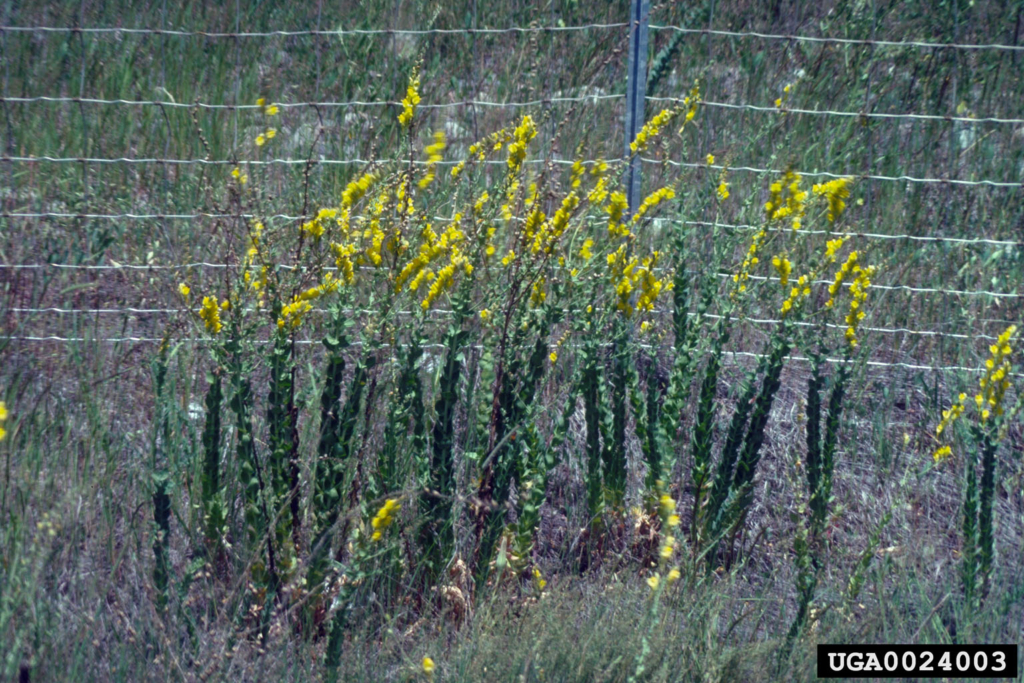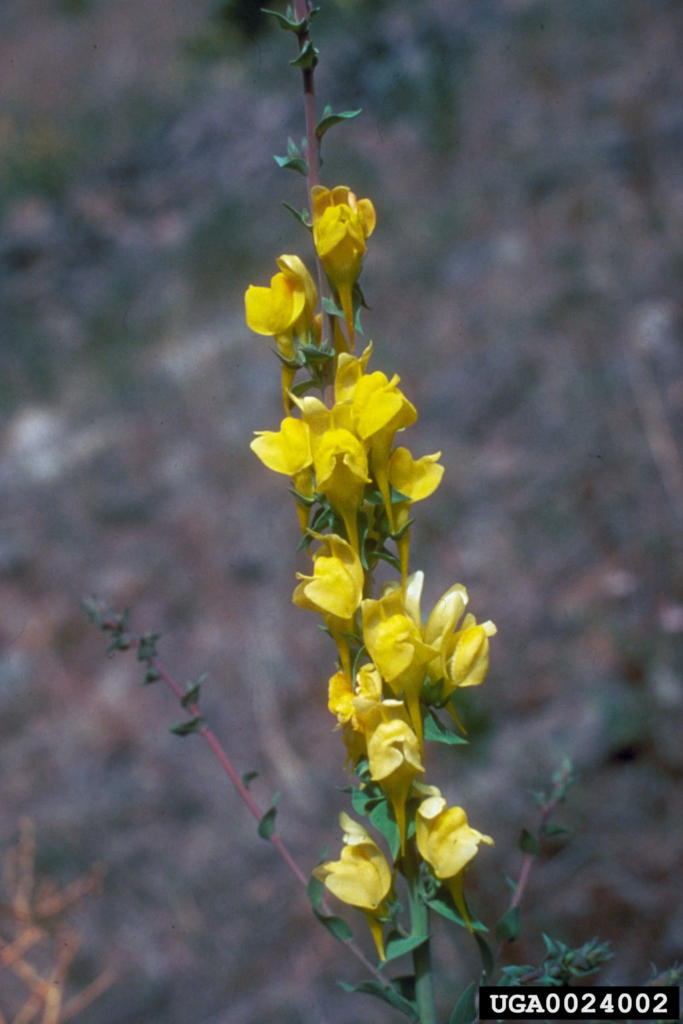Dalmatian Toadflax
Linaria dalmatica ssp. dalmatica
Plant Description
A narrow, upright plant with multiple stems growing from a single woody base. Yellow snapdragon flowers that are tinged with orange, 1-1.5 inches long. Pale green waxy leaves are heart shaped; upper leaves clasp the stem.
Plant Details
| Life Forms | |
|---|---|
| Habitats | |
| ODA Listing | |
| Soil and Moisture Conditions | |
| Suggested Actions | |
| Shade Preference | |
| Mature Height | 3' |
| Distribution | Present in much of Oregon but not known to exist in the mid-Willamette Valley. |
| Control | Dig up isolated plants being sure to remove all root fragments. Follow up at the site for several years. Cut and bag stems if the plant is in seed. |
| Disposal Methods | Cut and bag stems if the plant is in seed. |
| Reproduction and Spread | Spreads by seed and lateral roots. Seeds remain viable for up to 10 years. A single plant can produce up to 500,000 seeds per year. Seeds can be spread between sites if equipment is not well cleaned before leaving an infested site. Regular tillage will control it, and it doesn't grow well if a healthy stand of grasses and other vegetation is maintained. |
| Introduced | Mediterranean Europe, possibly in the early 1900s |
| Look Alikes | Linaria vulgaris (Butter and Eggs) |
| Impact | Crowds out valuable forage and reduces livestock production in infested pastures and rangeland. May be harmful to livestock. |
| More Info |
© Marion Soil and Water Conservation District. All Rights Reserved.


